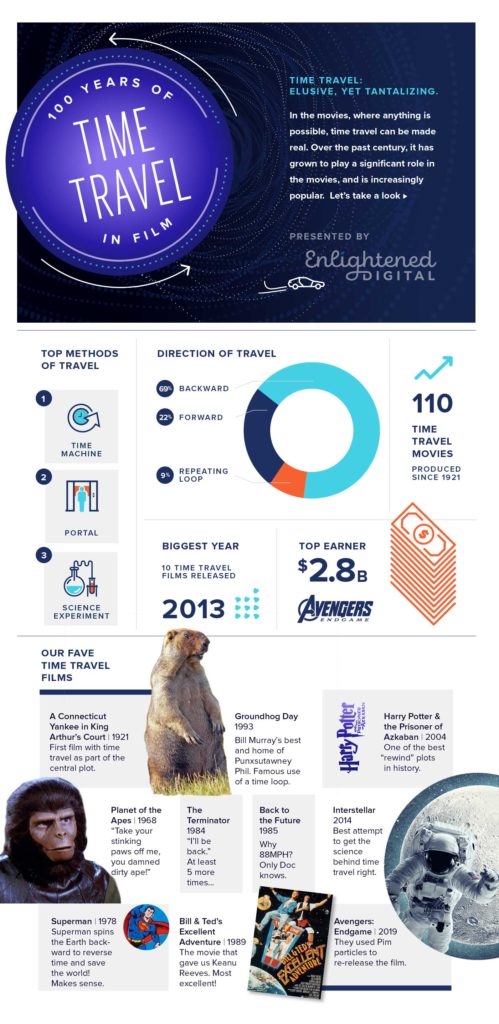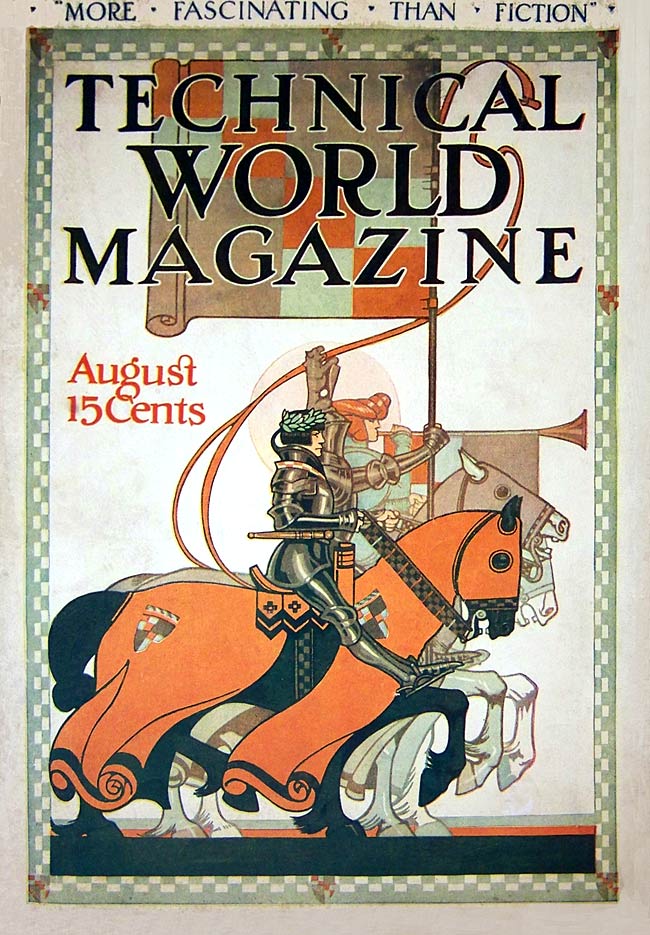(1) FAN HISTORY PROJECT SPOTLIGHT. File 770 is late to pass on the great news, but last October Fanac.org’s Joe Siclari told everyone on his list “that we have received a request from the Library of Congress to archive our site.”
…From the letter: “The Library of Congress preserves important cultural artifacts and provides enduring access to them…The Library will make this collection available to researchers at Library facilities and by special arrangement.” They may later make it publicly available as well. We’ve all seen the loss of many websites that showcase the hard work and outstanding accomplishments of fans and historians in our field. This archiving request from the Library of Congress will ensure that the work we’ve been doing with your help will be available, even after the current class of fan historians has bit the dust. Color us ecstatic. We’ll let you know when the process has completed.
The Library of Congress gives an overview of its web archiving program here.
The Library of Congress Web Archive manages, preserves, and provides access to archived web content selected by subject experts from across the Library, so that it will be available for researchers today and in the future. Websites are ephemeral and often considered at-risk born-digital content. New websites form constantly, URLs change, content changes, and websites sometimes disappear entirely. Websites document current events, organizations, public reactions, government information, and cultural and scholarly information on a wide variety of topics. Materials that used to appear in print are increasingly published online.
(2) COMPLETING THE SET. The 2020 Kurd Laßwitz Preis (German SF Award) winners now have all been named following this late selection:
Best German language audio drama first broadcast in 2019
- Unser Leben in den Wäldern by Marie Darrieussecq and Gerrit Booms, WDR
(3) D&D GETTING ANOTHER LOOK. From io9: “Dungeons & Dragons Team Announces New Plans to Address Race and Inclusivity in the Game”.
….in a new blog post on the official D&D website the development studio detailed what it has been doing to tackle the game’s own history of racist stereotyping, and what will be done going forward to ensure the game tastefully represents its fantasy world.
“Throughout the 50-year history of D&D, some of the peoples in the game—orcs and drow being two of the prime examples—have been characterized as monstrous and evil, using descriptions that are painfully reminiscent of how real-world ethnic groups have been and continue to be denigrated,” the new statement reads in part. “That’s just not right, and it’s not something we believe in. Despite our conscious efforts to the contrary, we have allowed some of those old descriptions to reappear in the game. We recognize that to live our values, we have to do an even better job in handling these issues. If we make mistakes, our priority is to make things right.”
Going forward, D&D will be making those things right with a six-point plan. Outside of the game itself, these include the use of sensitivity readers on upcoming and current Dungeons & Dragons sourcebooks as part of the creative process, and a commitment to “proactively seeking new, diverse talent to join our staff and our pool of freelance writers and artists,” a move already made for products set to release in the next year, but a policy being maintained going forward.
…From an editorial standpoint, the D&D team will also go back through material as it is being prepared for reprints, and update them to modify and remove any racially insensitive material. The adventures Tomb of Annihilation and The Curse of Strahd were cited as particular examples, with Curse of Strahd being called out specifically for its use of Romani sterotypes in the background of the Vistani, a nomadic group of travelers that primarily resided in Barovia before the death of Count Strahd von Zarovich. In the editorial process for Strahd’s reprint, as well as two upcoming products, Wizards worked with a Romani consultant to present the Vistani without using reductive tropes.
But some of the points delve into the game itself—for example, the aforementioned ongoing exploration and re-examination of Drow and Orcish cultures in the game’s fiction, beings that were long described as beastly and villainous by nature while also being approximations of non-white cultures….
(4) FATE OF LIBRARIES. Publishers Weekly warns “Changes Loom as Public Libraries Begin to Reopen”.
…But whenever that happens, the public libraries that will emerge from this historic pause will be changed from the ones that closed their doors in March, librarians tell PW, both in the short term, and into the future.
The most pressing issue facing libraries, of course, is how to reopen safely, for both library staff and the public. For most libraries, that means services like curbside pickup or limits on patron visits to start. It means ensuring library workers have appropriate personal protective equipment, and reconfiguring the library space: less furniture, distance between computer stations, more hand sanitizer stations, spit guards, and plexiglass dividers. It means contactless checkout, new cleaning procedures, and 72-hour materials quarantines.
It also means enormous pressure on library staff, including new rules to enforce, such as physical distancing and wearing masks. None of it will be easy. And all of it will be done under the threat of job cuts, a potential second wave of Covid-19 infections, immense budget pressure, and worsening political dysfunction….
(5) NO SMOKING. During last autumn’s round of California wildfires, a Washington Post writer accompanied a salesman for treating houses with fire retardant on a visit to Dean Koontz’ estate. “California will never stop burning”.
…Thirty miles southwest of the 46 Fire, Dean Koontz, the megaselling novelist, was standing outside his enormous new home the morning after Halloween.
“We had friends who wouldn’t move to California because of earthquakes.”
Like other Californians, he has stood on a roof with a garden hose and a stance of defiance.
“They moved to the Gulf Coast and got hit by a hurricane.”
It costs a fortune to insure some homes in California. This is why Koontz invited Moseley and his team for a consultation about a defensive sprinkler system and his SPF3000 spray. Local authorities have challenged the effectiveness and safety of the product, but Moseley has testimonials from grateful clients and documentation of test results.
He also has his on-the-go demonstration. On Koontz’s front stoop, Moseley blowtorches one end of a piece of wood. It ignites, burns, starts to disintegrate. Then he torches the other side, which has been treated with SPF3000. It blackens but does not ignite. Then Moseley scrapes the charred veneer with a car key to reveal intact wood underneath….
“Impressive,” Koontz says. His Tuscan-style villa is in a gated community near Irvine. This is a place of Bentleys and catering trucks, and an air of invincibility. Koontz knows that nothing is invincible. If he were younger, maybe he’d move to a place that wasn’t quaking and conflagrating so much. Arizona, perhaps. But he loves it here.
“None of us live forever,” he says. “And you have to weigh the quality of life with the risk.”
(6) ZAFÓN OBIT. “Carlos Ruiz Zafón, author of The Shadow of the Wind, dies aged 55” – The Guardian marked the passing of this best-selling Spanish-language author.
….Born in Barcelona, Ruiz Zafón worked in advertising before he made his debut as an author in 1993 with young adult novel The Prince of Mist. In 2001, he published The Shadow of the Wind, which followed a boy called Daniel who is taken to the Cemetery of Lost Books in Barcelona and becomes fascinated by the author Julian Carax and the shadowy figure trying to eradicate every last copy of Carax’s books. The novel was translated into English by Lucia Graves in 2004, and became an international hit. “If you thought the true gothic novel died with the 19th century, this will change your mind,” said Stephen King in a review. “Shadow is the real deal, a novel full of cheesy splendour and creaking trapdoors, a novel where even the subplots have subplots.”
Ruiz Zafón, who moved to Los Angeles in the 1990s, and divided his time between Spain and the US, has said that while he had written “pretty successful” young adult novels for 10 years, with The Shadow of the Wind he “wanted to create something very special”.
“So what I did was take what for me is very important, which is take all the great ambition in all those 19th-century novels, but try to reconstruct those big novels – the Tolstoy, the Dickens, the Wilkie Collins – but try to reconstruct all of that with all the narrative elements that the 20th century has given us, from the grammar of cinema, from multimedia, from general fiction, from everything that is out there, to create a much more intense reading experience for the readers,” he said.
He followed the bestseller up with three more novels in the series, The Angel’s Game, The Prisoner of Heaven and The Labyrinth of Spirits. Completing the tetralogy, he told Spanish press in 2016 that he had “the feeling of the job done”….
(7) TODAY IN HISTORY.
June 19, 1964 — The Twilight Zone finale aired.
“A swimming pool not unlike any other pool, a structure built of tile and cement and money, a backyard toy for the affluent.” — Rod Serling in his opening narration to this episode.
The Twilight Zone series finale: “The Bewitchin’ Pool” was the thirty-sixth episode of the fifth and final season. Earl Hamner, Jr., got the idea for this episode while living in the San Fernando Valley region and witnessing an alarming divorce rate and the effect it had on children. The episode was one of the first shows on television to really address the problem of divorce and bad parenting, and in part it represents wish fulfillment for children in such situations. It was directed by Joseph M. Newman from the script by Earl Hamner, Jr.
It had an unusually large cast: Mary Badham as Sport Sharewood, June Foray as Sport Sharewood (voice, outdoor scenes), Kim Hector as Witt, Dee Hartford as Gloria Sharewood, Jeffrey Byron as Jeb Sharewood, Georgia Simmons as Aunt T and Tod Andrews as Gil Sharewood.

(8) TODAY’S BIRTHDAYS.
[Compiled by Cat Eldridge and John Hertz.]
- Born June 19, 1824 – Henri Hildibrand. Wood engraver for Hetzel, who did so much good and bad for Verne; those editions were lavishly illustrated, anyhow. This cover for Twenty Thousand Leagues Under the Sea is a composite of a Peter Gimbel photo and a de Neuville print Hildibrand engraved. Here is Aronnax studying the giant squid. Here is the underwater destroyed town (note de Neuville’s signature at lower left). (Died 1897) [JH]
- Born June 19, 1872 – Sutton Griggs. Son of a slave; Baptist minister; active in the Nat’l Ass’n for the Advancement of Colored People; published and distributed his own books and pamphlets, thirty of them. Imperium in Imperio has a black nation hidden in Texas, outsold many contemporaries to whom he was invisible. (Died 1933) [JH]
- Born June 19, 1881 – Maginel Enright. Younger sister of Frank Lloyd Wright (Maginel a contraction of Margaret Ellen). Illustrated Frank Baum’s Twinkle Tales, Policeman Bluejay, Juvenile Speaker; five dozen by others. See here and here and here. Memoir, The Valley of the God-Almighty Joneses. (Died 1966) [JH]
- Born June 19, 1915 – Julius Schwartz. Co-published pioneer fanzine The Time Traveller. Helped organize NyCon I the first Worldcon. Co-founded Solar Sales Service, representing Bester, Bloch, Bradbury. In reviving or re-creating the Flash, Green Lantern, and like that, instrumental in opening Silver Age of Comics. Edited Batman, Superman, fifteen years each; dozens more. Memoir Man of Two Worlds subtitled “my life in science fiction and comics”; also he was active as fan and pro; also “Man of Two Worlds” was his creation Adam Strange – in whose stories Alanna’s father Sardath looked like him. Inkpot, Jack Kirby Hall of Fame, Will Eisner Hall of Fame. (Died 2004) [JH]
- Born June 19, 1921 — Louis Jourdan. Fear No Evil and Ritual of Evil, two tv horror films in the late Sixties, appear to be his first venture into our realm. He’d play Count Dracula in, errr, Count Dracula a few years later. And then comes the role you most likely remember him for, Dr. Anton Arcane in Swamp Thing which he reprised in The Return of Swamp Thing. Definitely popcorn films at their very best. Oh and let’s not forget he was Kamal Khan, the villain in Octopussy! (Died 2015.) (CE)
- Born June 19, 1926 — Josef Nesvadba.A Czech writer, best known in his SF short stories, many of which have appeared in English translation. ISFDB lists a number of stories as appearing in English and two collections of his translated stories were published, In The Footsteps of the Abominable Snowman: Stories of Science and Fantasy and Vampires Ltd.: Stories of Science and Fantasy. Neither’s available in digital format. (Died 2005.) (CE)
- Born June 19, 1947 — Salman Rushdie, 73. Everything he does has some elements of magic realism in it. (Let the arguments begin on that statement.) So which of his novels are really genre? I’d say The Ground Beneath Her Feet, Grimus (his first and largely forgotten sf novel), Two Years Eight Months and Twenty-Eight Nights and Haroun and the Sea of Stories. If you’ve not read anything by him, I’d start with The Ground Beneath Her Feet which is by far both one of his best works and one of his most understandable ones as well. (CE)
- Born June 19, 1949 – Marilyn Kaye. Taught twenty years at St. John’s University (New York), now lives in Paris. A hundred children’s and young-adult books, four dozen ours. In her Replica series, teenage Amy’s discovering she is a clone, genetically modified for superhuman abilities, is only the beginning. In her Gifted series, each in a small middle-school class has a superhuman ability; an outside group seeks to manipulate them and their abilities for profit; the students dislike their abilities and one another. [JH]
- Born June 19, 1953 — Virginia Hey, 67. Best-remembered for her role as Pa’u Zotoh Zhaan in the fabulous Farscape series and playing the Warrior Woman in Mad Max 2: The Road Warrior. She’s also Rubavitch, the mistress of the KGB Head, General Pushkin, in The Living Daylights. She also had a brief appearance as a beautician in The Return of Captain Invincible, an Australian musical comedy superhero film. No, I’ve not seen it. (CE)
- Born June 19, 1957 — Jean Rabe, 63. She’s a genre author and editor who has worked on the Dragonlance, Forgotten Realms, Rogue Angel and BattleTech series, as well as many others. Ok I admit to a degree of fascination with such writers as I’m a devotee of the Rogue Angel audiobooks that GraphicAudio does and she’s written according to ISFDB five of the source novels under the house name of Alex Archer. (CE)
- June 19, 1963 – Aleksandar Žiljak. A dozen short stories; some covers and interiors, see here (his collection Blind Birds). Co-edited Ad Astra anthology of Croatian SF 1976-2006; co-edits literary SF journal Ubiq. Six SFera Awards: three for Best Story, two for Best Illustration, one (shared) for Ad Astra. The Wayback Machine has this interview. [JH]
- Born June 19, 1978 — Zoe Saldana, 42, born with the lovely birth name of Zoë Yadira Saldaña Nazario. First genre role was Anamaria in Pirates of the Caribbean: The Curse of the Black Pearl. She’s Nyota Uhura in the new Trek series, and she’s also Neytiri in the Avatar franchise. She portrays Gamora in the MCU, beginning with Guardians of the Galaxy, a truly great film though I’m less impressed with the second film by far. (CE)
(9) COMICS SECTION.
- Cul de Sac’s Petey survives a post-apocalyptic world:
- Bizarro offers spare parts.
- Rhymes with Orange poses an ursine etiquette question.
- Batman is quite likely to be Moderately Confused after being called out for this failing.
- Saturday Morning Breakfast Cereal poses the question, what’s broken, you or reality?
- Frank and Ernest have a book sale.
(10) THE GREATEST. “Panel Mania: Jack Kirby: The Epic Life of the King of Comics by Tom Scioli”— Publishers Weekly has an 11-page excerpt. The book will be released in July.
There’s a reason why Jack Kirby, co-creator of such iconic comics characters as the Fantastic Four, Black Panther, and Captain America, is called the “King of Comics.” Considered one of the great innovators in the history of American comics, Jack Kirby (1917-1994) is arguably the greatest superhero comic book artist of all time.
In the new graphic biography, Jack Kirby: The Epic Life of the King of Comics, comics artist and biographer Tom Scioli pays tribute to Kirby in a vividly illustrated and comprehensively researched examination of Kirby’s life and career from his rough and tumble childhood growing up on the Lower East Side of New York in the early 20th century to his military service in WWII to the transformative comics he created for Marvel and later for DC Comics….

(11) SACKY HACK. This is real thinking outside the box.
(12) MARCH OF TIME. At the LA Review of Books, Aleida Rodriguez’s autobiographical essay “Time Machine”, in addition to Wells and Borges, even mentions Clyde Crashcup from the Rocky & Bullwinkle Show.
WHEN I LANDED in the US as a child of nine, I felt I had not only traveled in space but also in time. Though it was 1962, behind me lay a 19th-century world of oil lamps, muddy rutted roads, and horse-drawn carts, while before me flickered a vision so sleek and modern there were no shadows and bright-green lawns sprouted cones of mist.
Time traveler became my invisible identity. Secretly, I searched for mentors in movies like The Time Machine (1960), envying Rod Taylor his ability to go back and forth, to witness and control the passage of time. Propelled and buoyed by a utopian vision of the future, he set off, watching the rising hemline on a mannequin in a shop window, then the shop itself disintegrating to dust in an instant, the surrounding buildings crumbling and disappearing, replaced by insect-like cranes scampering on skyscrapers. His present had succumbed to shattered shards. But by moving a crystal-topped lever sharpened to a point like a pen, he could also reverse direction and return to his intact and cloistered world of waistcoats.
I yearned for that, a trip back — not to Bountiful but to a prelapsarian time, before the rupture in my family caused by the Cuban revolution….
(13) X FACTOR. BBC has a picture of a “Breathtaking new map of the X-ray Universe”.
Behold the hot, energetic Universe.
A German-Russian space telescope has just acquired a breakthrough map of the sky that traces the heavens in X-rays.
The image records a lot of the violent action in the cosmos – instances where matter is being accelerated, heated and shredded.
Feasting black holes, exploding stars, and searingly hot gas.
The data comes from the eRosita instrument mounted on Spektr-RG.
This orbiting telescope was launched in July last year and despatched to an observing position some 1.5 million km from Earth. Once commissioned and declared fully operational in December, it was left to slowly rotate and scan the depths of space.
eRosita’s first all-sky data-set, represented in the image at the top of this page, was completed only last week. It records over a million sources of X-rays.
“That’s actually pretty much the same number as had been detected in the whole history of X-ray astronomy going back 60 years. We’ve basically doubled the known sources in just six months,” said Kirpal Nandra, who heads the high-energy astrophysics group at the Max Planck Institute for Extraterrestrial Physics (MPE) in Garching, Germany.
(14) QUARANTINE CAT FILM FESTIVAL. This looks promising!
The most purr-fect, a-meow-zing, and totally fur-tastic cat videos anyone has ever seen!
[Thanks to Darrah Chavey, Frank Olynyk, Mike Kennedy, Lise Andreasen, Martin Morse Wooster, John King Tarpinian, John Hertz, JJ, Cat Eldridge, Chip Hitchcock, Michael Toman, and Andrew Porter for some of these stories. Title credit goes to File 770 contributing editor of the day Kip Williams.]





